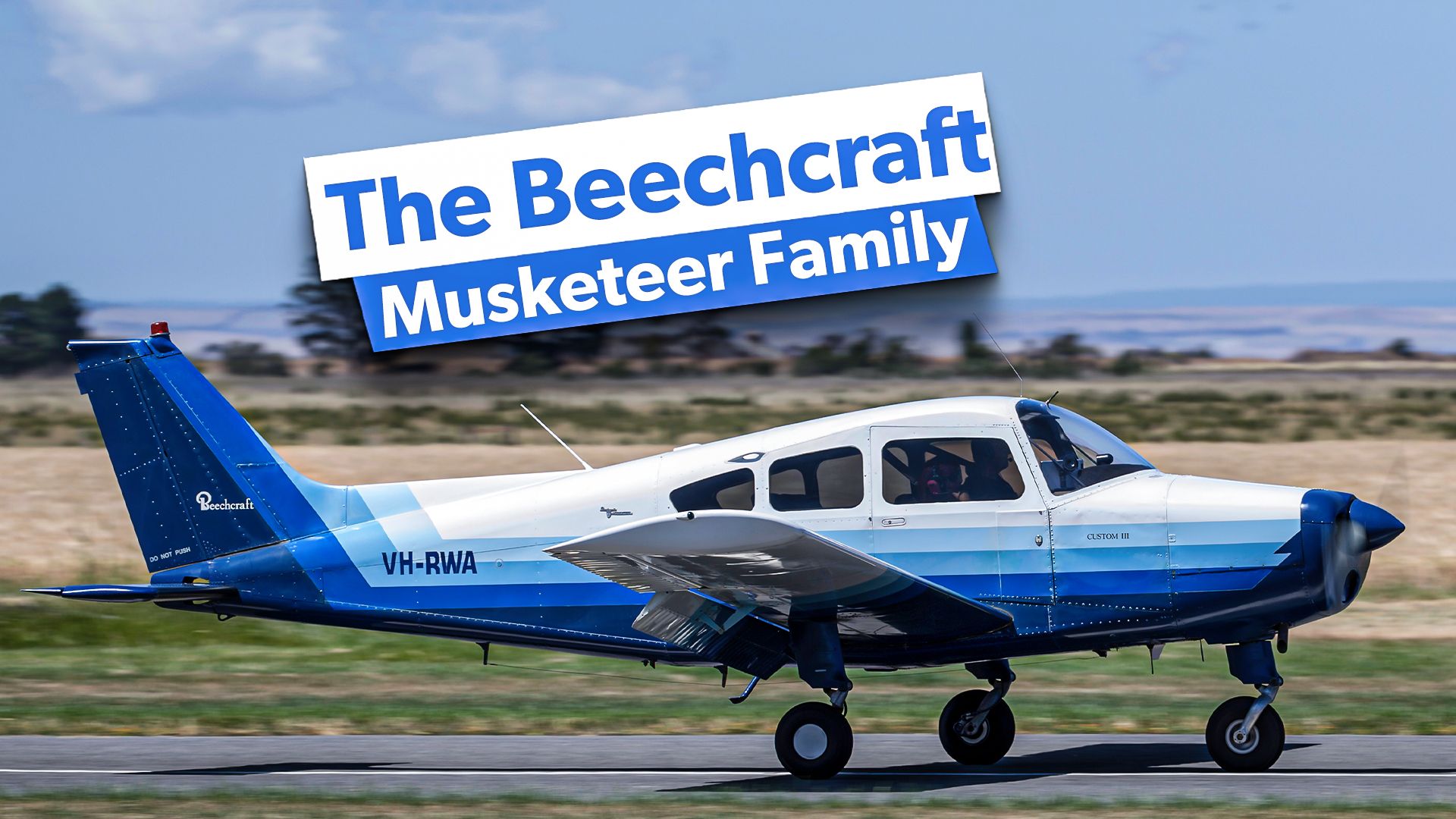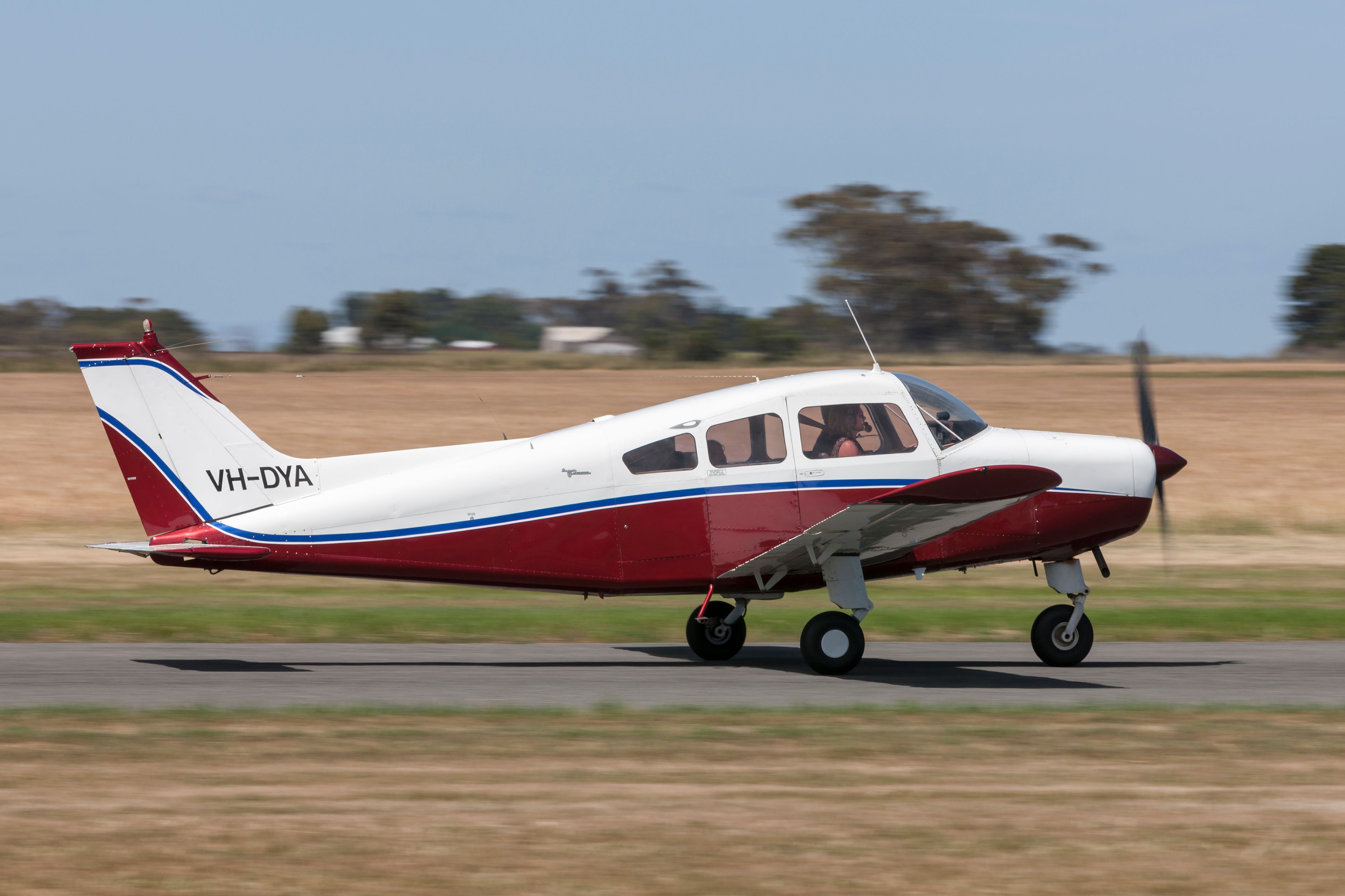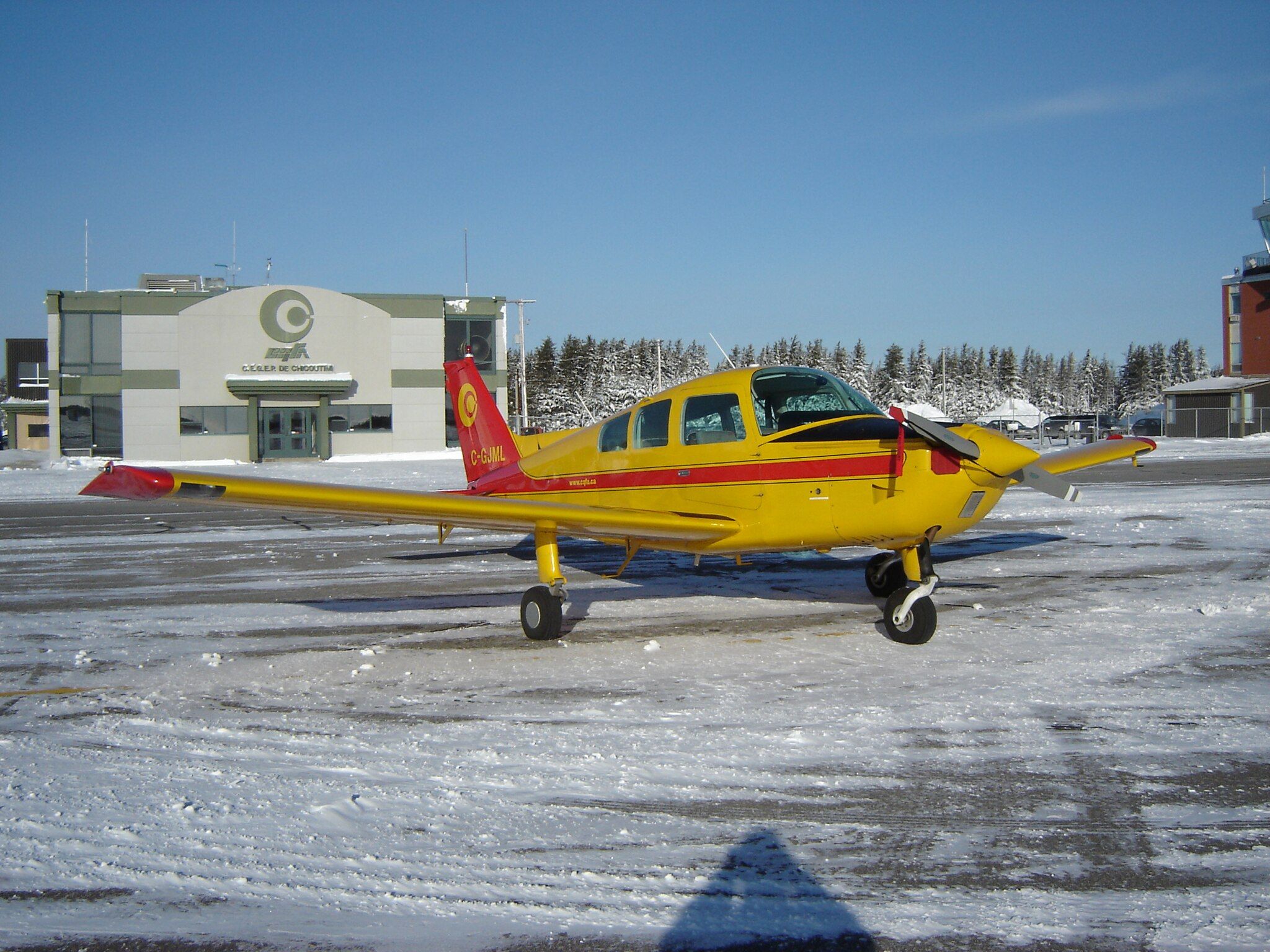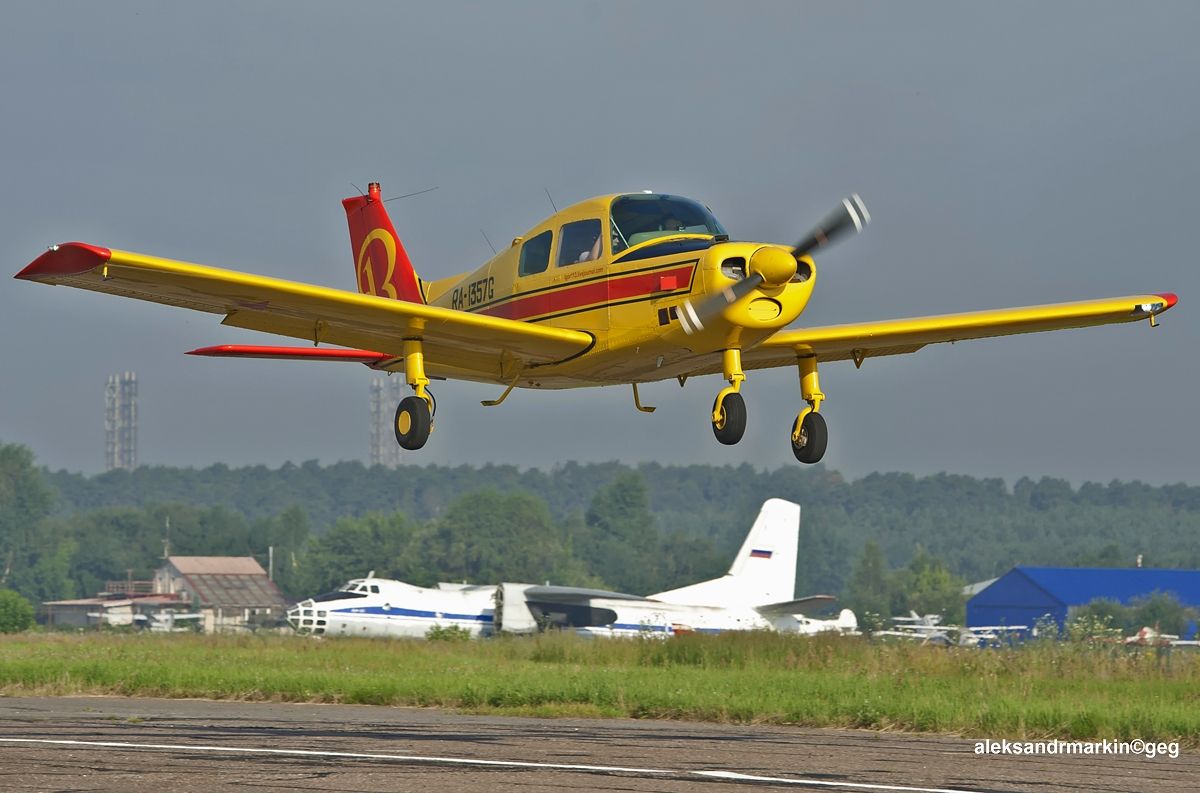Summary
- Beechcraft, a renowned aircraft manufacturer, started with the Staggerwing Model 17 followed by various other notable models.
- The Musketeer aircraft family includes models like the Model 23, Model 19 Sport, and the powerful Musketeer Super series.
- The Beechcraft Sierra, the most advanced in the Musketeer series, was produced until 1983 and saw adoption in various military training programs.
Beechcraft is one of the most notable general aviation aircraft manufacturers in the world. The Wichita, Kansas-based company has been around for nearly 100 years. It was first founded in 1932 by aviation entrepreneur Walter Beech, his wife Olive Ann Beech, and legendary aeronautical engineer Ted A. Wells.
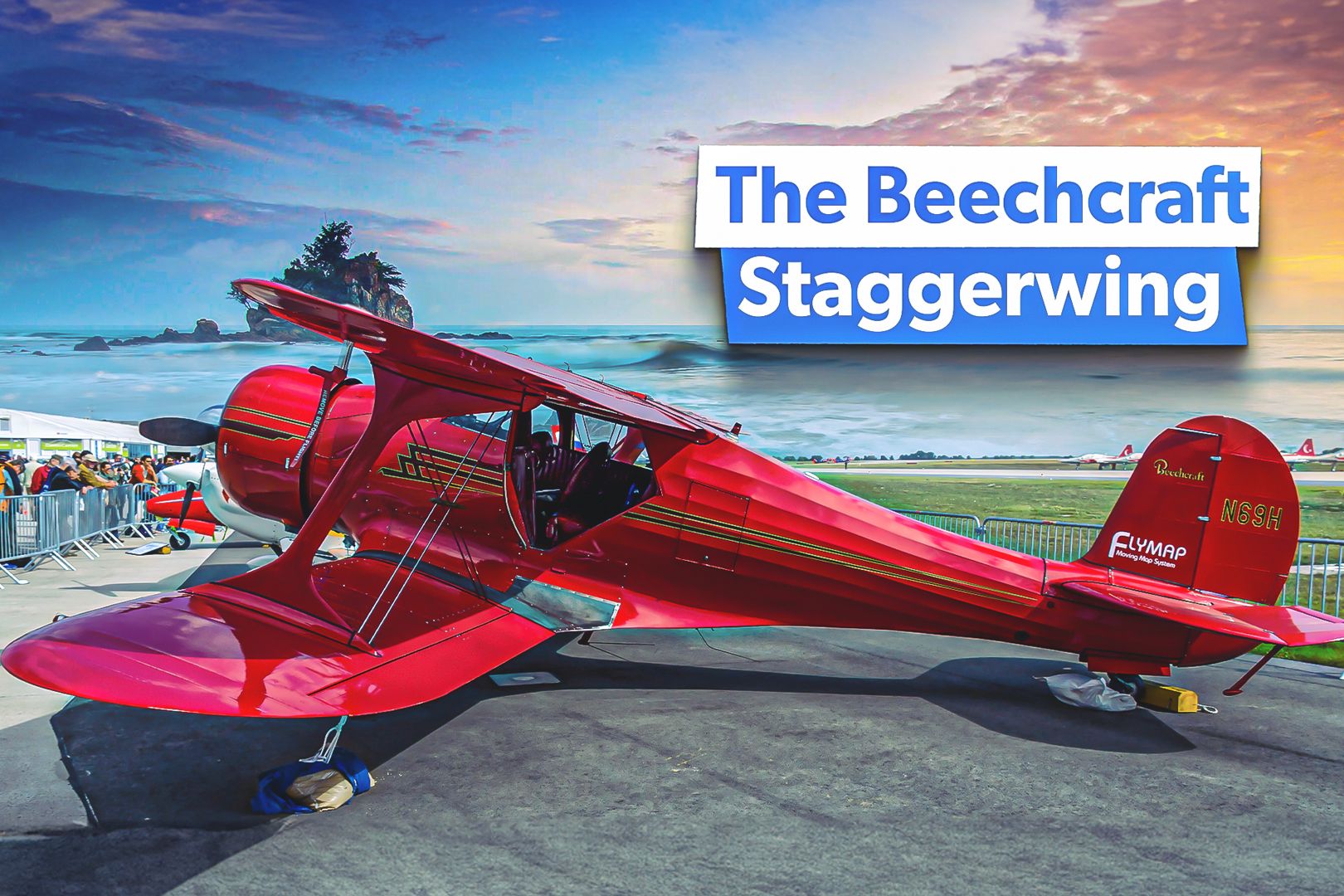
Related
Staggerwing: What Was The First Beechcraft Aircraft?
The aircraft was released in 1932, the same year that Beechcraft was founded.
Since it was founded in 1932, the company has become one of the premier general aviation original equipment manufacturers (OEMs).
Its aircraft production began with the legendary Beechcraft Model 17 Staggerwing. The company has also produced the following notable aircraft:
Currently, the company, which is now owned by Textron Aviation, produces the Bonanza series, the Baron, the King Air, the T-6 Texan, and the soon-to-be certified Denali. However, one of Beechcraft’s most successful series of aircraft is the Musketeer, which is not typically noted when thinking of Beech-made aircraft.
Over 4,250 Musketeer variants were produced from 1963 through 1983. Let’s take a closer look at this family of aircraft, as well as some of the unique variants that the Musketeer family consists of.
The Model 23 Musketeer
The original Musketeer was the Model 23 Musketeer. Beechcraft first rolled this aircraft out in 1963. It was first powered by a Lycoming O-320-D2B engine, but it was replaced shortly after due to its low power output.
The replacement engine was the Continental IO-346-A, which was also not powerful enough for the aircraft to achieve high-performance specifications. Therefore, Beechcraft resorted to utilizing the Lycoming O-360-4J piston engine.
Aircraft that were built with the Lycoming O-360-4J were designated the Musketeer Custom, or the C23. This high-performance aircraft was approved for limited aerobatics.
Photo: Ryan Fletcher | Shutterstock
The Model 23 Musketeer could fit four passengers and utilized tricycle landing gear. The newest upgraded Lycoming engine provided the aircraft with 180 horsepower. This helped the Model 23 Musketeer achieve the following performance specifications:
|
Length |
25 feet eight inches |
|---|---|
|
Height |
Eight feet three inches |
|
Wingspan |
32 feet nine inches |
|
Gross weight |
2,400 pounds |
|
Cruise speed |
130 knots (150 miles per hour) |
|
Range |
640 nautical miles (737 miles) |
|
Service ceiling |
15,000 feet |
The Model 19 Musketeer Sport
Another popular Musketeer variant was the Model 19 Sport variant. This aircraft was introduced in 1966. The Musketeer Sport is considered to be a trainer type for other Musketeer variants. It was also utilized by flight schools as a trainer aircraft. Because of this, it utilizes a less-powerful engine.
The Model 19 Musketeer Sport uses a Lycoming O-320-E2C piston engine, which provides the aircraft with about 150 horsepower. It was also slightly smaller in size. Despite the less powerful engine, the Musketeer Sport is still approved for certain aerobatics.
The Musketeer Super series
Beechcraft introduced the first of the Musketeer Super series at the same time as the Model 19 Musketeer Sport, in 1966. The Musketeer Super was a more powerful Musketeer, and it was designated the Beechcraft 23-24 Musketeer Super III.
The Musketeer Super utilizes a larger Lycoming IO-360 fuel injected engine. This provides just over 200 horsepower, making it the most powerful of the Musketeer series.
The aircraft had the option of being delivered with a constant speed propeller. These advanced propellers adjust the blade pitch to maintain a steady RPM during flight, which improves the engine’s efficiency.
The powerful aircraft has a large useful load, over 1,000 pounds, which was one of the highest payloads for a single-engine aircraft at the time. However, only 300 aircraft variants were produced from 1966 to 1969 prior to the Model 24 superseeding it.
The Model 24 Sierra
The Sierra variant of the Musketeer series was seemingly the most advanced configuration in the family of light aircraft.
Beechcraft first introduced this variant in 1970, after it saw the success of the more powerful Musketeer Super series. However, several design issues with the Musketeer Super prevented the aircraft from utilizing all 200 horsepower from its Lycoming IO-360 fuel injected piston engine.
To solve this issue, Beechcraft designed the Musketeer with retractable landing gear. This solved any aerodynamic and drag issues while in flight. Beechcraft introduced this aircraft in 1970, and it was at first designated as the Musketeer Model A24R Super R.
The name of the aircraft officially changed to the Beechcraft Sierra in 1972. It was included in Beechcraft’s lineup with the larger and more expensive Beechcraft Bonanza, and it also competed directly with the popular Piper Archer.
The Beechcraft Sierra was the last variant of the Musketeer series that Beechcraft produced, and it closed down its production line in 1983.
However, nearly 750 total Beechcraft Sierras were delivered. Additionally, Beechcraft adopted the Musketeer design for another aircraft, the twin-engined Beechcraft Model 76 Duchess.
The CT-134 Musketeer
Several militaries chose the Musketeer as a trainer aircraft over the years. This includes:
- Algerian Air Force
- Royal Hong Kong Auxiliary Air Force
- Mexican Air Force
- Royal Moroccan Air Force
However, the Canadian Armed Forces utilized a special military training derivative, which was designated the CT-134 Musketeer. The military used the Musketeer variant as a powerful trainer in which student pilots would learn prior to beginning training school on jet trainers, like the Canadair CT-114 Tutor.

